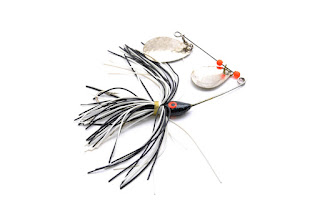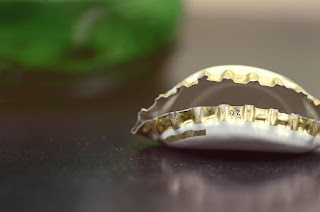Homemade Baits: Learn How To Make The Equipment At Home
Among fishermen, bait is perhaps the most democratic item of all: it can be natural or artificial; surface, mid-water or bottom ; big or small; white, pink, green or colored… it doesn’t matter the details, as long as it is used with skill and intelligence.
 |
| Homemade Baits: Learn How To Make The Equipment At Home |
What some don’t know, however, is that there are dozens of homemade baits, which can be made with simple everyday materials and that serve to help you hook big brutes.
Curious? Read on and discover how to make artificial baits of five different models with materials you already have at home!
1. Homemade bait with spoon
Some fish, when they go to hunt their prey, are attracted precisely by the shine of the scales of smaller species. As the light hits the skin of the little fish, they reflect in the eyes of the big ones, which quickly set up the boat.
One of the ways to imitate this luminosity is using a spoon bait. Although there are a few models available to buy on the market, you can make your own using old cutlery, a drill, hook and some wire.
For those who like to fish with spinner bait, it is possible to combine the spoon bait with a jig of your choice. In this way, the fish will be attracted both by the light and by the colorful appearance and the movement of the bristles.
The spoon bait can be used to make a spinner bait.
 |
| Homemade Baits: Learn How To Make The Equipment At Home |
2. Homemade toothbrush bait
Another great material to make your bait is toothbrushes. In addition to giving great results, they are a great way to reuse these items, as they are usually made of plastic, a material that takes time to degrade in nature.
You will need: a toothbrush and three threaded studs , as well as a drill, saw and sandpaper. Here’s how to make your bait step by step:
- Step 1: Cut the toothbrush roughly in half using a hacksaw or bow. Use as a reference the part where it tapers at the top.
- Step 2: Using sandpaper, finish off the cut part. It doesn’t have to be perfect, but make the silhouette more natural so the fish doesn’t get suspicious.
- Step 3: With the drill equipped with a very fine bit, drill three holes – one at the front, one at the back and one in the middle.
- Step 4: Heat the studs with a lighter, and with the help of pliers, rotate well until they are well fixed to the ends where you made the hole.
- Step 5: Now just fit the hooks ! If you want, you can glue fake eyes to the front to make it look more realistic.
If you make a very neat bait, you will see that it is very similar to the models available for purchase. To make the fish even more excited, choose brushes with pink and yellow details.
3. Homemade bait with cap
This is perhaps the easiest type of bait to improvise. To make it, you will need glass bottle caps, a wire suitable for fishing, pellets and a hook, in addition to the pliers to manipulate the materials .
The logic is as follows: make a small circle at one end of the wire, making sure it doesn’t come loose. Then pass the sinker inside until the end.
The next step is to take the cap and fold it in half so that it looks like a shell. Place the wire right in the center, so that the sinker passes through the cavity, and close the pliers well.
Folded bottle caps are great to be used as bait and attract fish.
Once that’s done, make another circle at the other end of the wire and cut off the excess. On one side, attach the hook, and on the other, the fishing line. Ready! Now it’s time to go fishing.
 |
| Homemade Baits: Learn How To Make The Equipment At Home |
4. Cork bait
Don’t know what to do with your corks? So, let’s give you a valuable tip: baits made with the material are great for surface fishing because they have low density and help attract fish.
To make yours, follow this process: in a line, place the hook and braid the end, tying it with a simple knot. After that, take a round of cork with a size between 0.5 and 1 centimeter.
Make a hole right in the middle of the disc (you can use a needle or the hook itself) and pass the thread through that hole. You will see that the knot should leave the hook well attached and moving slightly.
When using, place a natural bait on the end of the hook. This whole system will further increase the chances of catching fish that are attacking on the surface.
5. Homemade lure with wood
This last option is for those who like and know how to work with wood. After all, the baits we buy in stores are nothing more than this carved, painted and varnished material – a process that you can repeat on your own.
The positive side is precisely being able to make the bait the way you want in terms of shape, weight and color.
By making your own homemade baits, you will be reusing some materials, which is very positive for nature. In addition, it can increase the options in your bag and also your repertoire of techniques .

